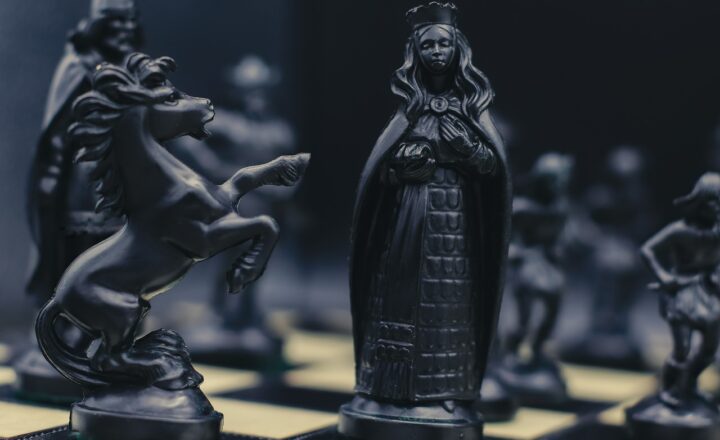How Certain Plants and Animals Have Been Revered, Feared, and Worshipped Throughout History
November 17, 2024

From the mighty oak tree to the enigmatic serpent, countless plants and animals have held significant places in human culture and history. These living beings have not only inspired awe and reverence but have also instilled fear and superstition among different civilizations. Through this exploration, we will delve into the fascinating relationships that humans have cultivated with certain species throughout history, examining the reasons behind their exaltation and the fears they invoke.
1. The Cultural Significance of Plants: Symbols of Life and Death
Plants have always played a vital role in human existence, serving as sources of food, medicine, and materials. However, their symbolic meanings extend far beyond mere utility. Across various cultures, certain plants have come to embody profound concepts.
The Oak Tree: Strength and Endurance
The oak tree has been revered in many cultures, particularly among the Celts and Germans. This majestic tree is often seen as a symbol of strength, endurance, and wisdom. The ancient Druids regarded the oak as sacred, believing that it was the dwelling place of various deities. Its durability and majestic presence made it a favored choice for building, while its acorns were a vital food source for many cultures.
Additionally, the oak’s association with strength is mirrored in phrases like “mighty oak” and “sturdy like an oak,” further embedding the plant into the cultural lexicon.
The Lotus: Spiritual Awakening and Purity
In many eastern cultures, especially in Hinduism and Buddhism, the lotus flower represents purity, beauty, and spiritual awakening. Emerging from muddy waters, the lotus defies its environment and blooms into a symbol of enlightenment. In various texts, gods and goddesses are depicted as seated on lotuses, signifying their divine nature. This plant’s journey from mud to flower inspires many to transcend their struggles and bloom into their best selves.
2. Animals in Mythology: Fear and Reverence
Animals often evoke strong emotional responses among humans, leading to their elevation as symbols in mythology and folklore. Many cultures have both feared and revered specific animals, attributing different meanings and lessons to their characteristics.
The Wolf: Fearsome Hunter and Spiritual Guide
The wolf has long been a subject of both fear and admiration in various cultures. In Native American traditions, wolves are often seen as symbols of loyalty and family ties, embodying guidance and communication. However, in European folklore, they have been demonized, often depicted as vicious predators and targets of fear. The dual nature of the wolf symbolizes the complexity of human emotion toward nature’s creatures.
The Serpent: Wisdom and Deceit
Throughout history, serpents have represented dualities—wisdom and deceit, creation and destruction. In the biblical context, the serpent embodies temptation and evil, while in other cultures, such as Hinduism, the serpent is revered and often associated with divine wisdom and protection. The coiling serpent symbolizes the cycle of life and death, embodying both fear and reverence depending on the cultural lens through which it is viewed.
3. Plants and Animals in Religion: Divine Connections
In many religions, specific plants and animals are considered holy and are integral to spiritual practices. They often symbolize the connection between the divine and the earthly.
Sacred Cows in Hinduism
In Hindu culture, the cow is revered as a sacred animal representing motherhood, fertility, and the divine. It is a symbol of non-violence and is celebrated for its utility in providing milk and agricultural labor. Killing a cow is seen as a grave offense in Hindu societies, steeping the animal in layers of reverence and protection.
The Olive Tree: Peace and Prosperity
The olive tree has held significant symbolism in the Mediterranean cultures, particularly in ancient Greece. It signifies peace, wisdom, and prosperity. Wreaths made of olive branches were awarded to victors in the ancient Olympic Games, linking the plant to victory and accomplishment. Moreover, olive oil is often used in religious rituals, underscoring its sacred status.
4. Ecological Fear: Plants and Animals as Omens
As humans evolved and civilizations developed, so did our relationship with nature. The fear of the unknown often resulted in plants and animals being perceived as omens or harbingers of doom.
The Black Cat: Bad Luck or Good Fortune?
The black cat has been one of the most feared creatures in Western folklore, often associated with witchcraft and bad luck. In contrast, in other cultures, like those in parts of Ireland and Japan, black cats are viewed as symbols of good fortune. This dichotomy showcases the impact of superstitions on human interactions with certain animals.
Mushrooms: Symbols of Danger and Mystery
Mushrooms have a dual nature in folklore. Some species are celebrated for their nutritional value, while others are deemed poisonous and often feared. This balancing act of admiration and fear makes mushrooms a captivating subject in tales of mystery and intrigue. In some native cultures, mushrooms are seen as gateways to the spiritual world.
5. Conclusion: A Rich Tapestry of Connection
Plants and animals have shaped human history and culture in profound ways. Whether revered as sacred symbols or feared as ominous signs, the relationships we share with these living beings reflect our deepest values, beliefs, and fears. As society continues to evolve, so will our understanding and reverence for nature’s wonders.
As we navigate the complexities of the modern world, recognizing the significance of our connections to the plant and animal kingdoms is essential. Embracing their roles in our history helps us foster a greater appreciation for biodiversity, urging us to protect and sustainably interact with the natural world to ensure that these relationships endure for generations to come.







